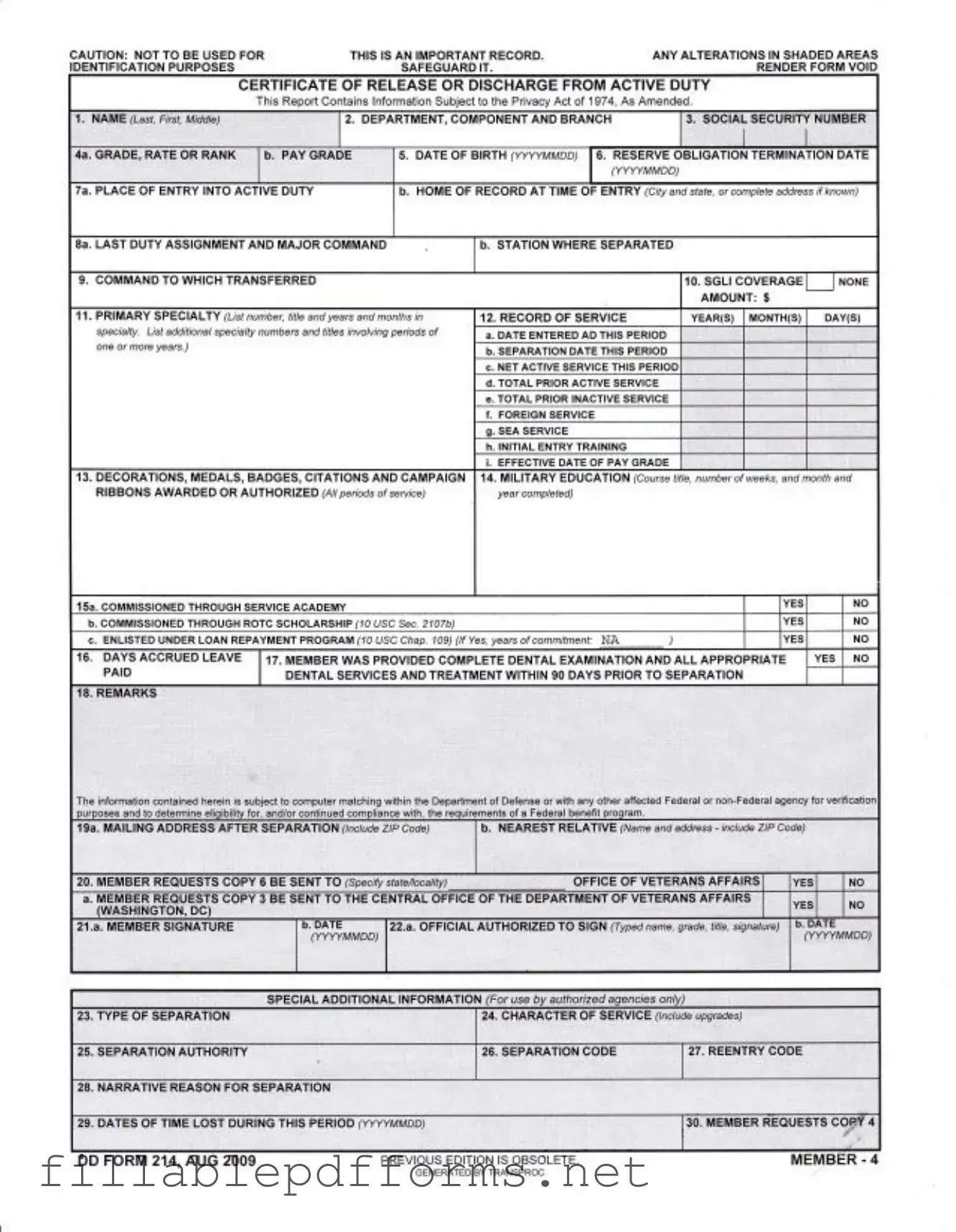The DD Form 214, officially known as the Certificate of Release or Discharge from Active Duty, serves as a critical document for military personnel transitioning out of service. This form encapsulates essential information about a service member's military career, including their name, social security number, rank, and branch of service. Additionally, it details the member's service record, highlighting periods of active duty, foreign service, and any awards or decorations received during their time in the military. The DD 214 also specifies the nature of the discharge, which can significantly impact a veteran's eligibility for benefits, employment opportunities, and other post-service resources. Importantly, this document is not intended for identification purposes, emphasizing the need for careful handling and safeguarding. It includes sections for remarks, accrued leave, and various codes related to separation and reentry, making it a comprehensive record of a service member's time in the armed forces. For veterans, the DD Form 214 is more than just a piece of paper; it is a vital key to accessing the benefits and services earned through their dedication and sacrifice.
